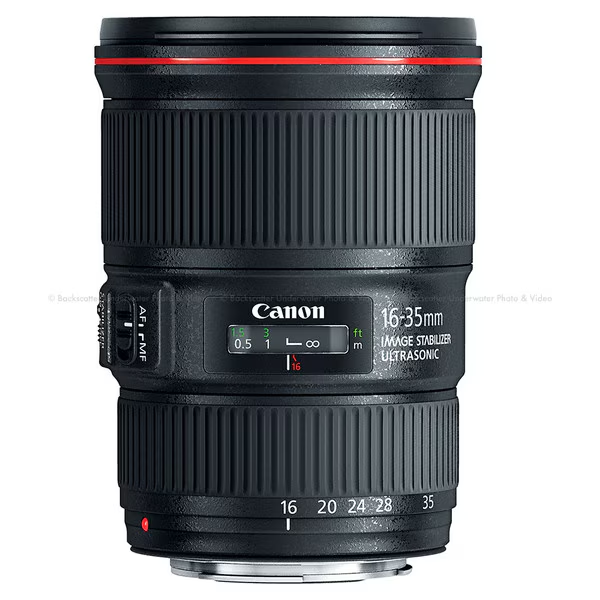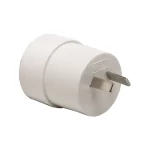Canon lenses have long been a staple for photographers worldwide. Renowned for their exceptional quality, reliability, and versatility, Canon lenses cater to a wide range of photographic needs, from casual snapshots to professional-grade imagery. In this article, we’ll delve into the world of Canon lenses, exploring their key features, popular models, and why they continue to be a top choice for photographers.
Understanding Canon Lens Mounts
Before we dive into specific lenses, it’s essential to understand the different lens mounts used by Canon cameras. Two primary mounts dominate the Canon ecosystem:
- EF Mount: This is the classic mount used by most Canon DSLR cameras. It offers a vast array of lenses, from wide-angle to telephoto, and is compatible with a wide range of Canon bodies.
- RF Mount: A newer mount introduced with Canon’s mirrorless EOS R system, RF mount lenses are designed to take advantage of the latest camera technologies. They offer improved autofocus performance, image stabilization, and overall image quality.

Key Features of Canon Lenses
Canon lenses are known for several key features that contribute to their exceptional performance:
- Image Stabilization: Many Canon lenses, especially telephoto and zoom lenses, incorporate image stabilization technology. This helps reduce camera shake, especially in low-light conditions or when using longer focal lengths.
- Fast Aperture: A fast aperture, denoted by a low f-number (e.g., f/1.8, f/2.8), allows for better low-light performance and shallow depth of field. This is ideal for portrait photography and capturing images in dimly lit environments.
- Weather Sealing: Some Canon lenses are weather-sealed, making them durable and reliable in challenging conditions like rain, snow, or dust.
- Ultrasonic Motor (USM): Canon’s USM technology provides fast, quiet, and accurate autofocus, making it ideal for capturing fleeting moments.
- L-Series: Canon’s L-series lenses are considered the pinnacle of optical engineering, offering exceptional image quality, durability, and weather sealing.

Compatibility with Canon cameras
Canon offers a wide range of lenses, but understanding their compatibility with different camera bodies can be a bit confusing. Here’s a simplified breakdown:
Two Main Mount Systems:
-
EF Mount:
- Designed for both full-frame and APS-C sensor Canon DSLR cameras.
- Offers a vast array of lenses, from wide-angle to telephoto.
- Can be used on newer Canon mirrorless cameras with an adapter.
-
RF Mount:
- Specifically designed for Canon’s mirrorless EOS R system.
- Offers faster autofocus, better image stabilization, and improved overall performance.
Compatibility Chart:
| Lens Mount | Compatible Cameras |
|---|---|
| RF | EOS R, R5, R6, R3, R8, RP, R10, R50, and future mirrorless models |
| RF-S | APS-C sensor mirrorless cameras like the R7 and R10 |
| EF | Most DSLR cameras and mirrorless cameras with an adapter |
| EF-S | APS-C sensor DSLR cameras and mirrorless cameras with an adapter |
Key Points to Remember:
- EF-S lenses are designed for APS-C sensor cameras and will produce a cropped image on full-frame cameras.
- EF lenses can be used on both full-frame and APS-C sensor cameras.
- RF lenses are optimized for mirrorless cameras and offer superior performance.
- Adapters allow you to use EF and EF-S lenses on RF mount cameras, but you may lose some features and performance.
For the most accurate and up-to-date information, always consult Canon’s official website or your camera’s user manual.
Popular Canon Lens Categories
Canon offers a diverse range of lenses to suit various photographic styles and preferences. Here are some popular categories:
-
Prime Lenses:
- Standard Prime Lenses: These lenses, typically with focal lengths around 50mm, offer a natural perspective similar to human vision. They are great for general-purpose photography, including portraits, street photography, and landscapes.
- Wide-Angle Prime Lenses: With focal lengths shorter than 35mm, wide-angle lenses are ideal for capturing expansive landscapes, architecture, and interior spaces.
- Telephoto Prime Lenses: These lenses, with focal lengths longer than 85mm, are perfect for wildlife, sports, and portrait photography. They allow you to capture distant subjects with detail and clarity.
-
Zoom Lenses:
- Standard Zoom Lenses: These versatile lenses typically cover a focal length range of 24-70mm or 24-105mm. They are excellent for general-purpose photography and travel.
- Wide-Angle Zoom Lenses: With focal lengths ranging from 16mm to 35mm, these lenses are ideal for landscapes, architecture, and real estate photography.
- Telephoto Zoom Lenses: These lenses offer a wide range of focal lengths, often from 70mm to 200mm or even longer. They are perfect for wildlife, sports, and event photography.

Tips for Choosing the Right Canon Lens
Choosing the right Canon lens can significantly impact your photography. Here are some key factors to consider:
Research and Read Reviews:
- Online Forums and Reviews: Seek advice from experienced photographers and read reviews to understand the pros and cons of different lenses.
- Lens Rentals: Consider renting lenses to try them out before investing.
Prioritize Your Photography Style:
- Landscape Photography: Wide-angle lenses with a large aperture and image stabilization.
- Portrait Photography: Prime lenses with a wide aperture for shallow depth of field.
- Wildlife Photography: Telephoto lenses with long focal lengths and image stabilization.
- Street Photography: Wide-angle or standard prime lenses for discreet shooting.
Don’t Forget the Accessories:
- Lens Hood: Protects the front element from impact and flares.
- Lens Filters: UV, polarizing, and neutral density filters can enhance your images.
- Camera Bag: A well-padded camera bag protects your lens during transportation.
By carefully considering these factors, you can choose the perfect Canon lens to elevate your photography.

Choosing the Right Canon Lens
When selecting a Canon lens, consider the following factors:
- Camera Body Compatibility: Ensure the lens is compatible with your camera’s mount (EF or RF).
- Focal Length: Choose a focal length that suits your photography style and subject matter.
- Aperture: A wider aperture (lower f-number) allows for better low-light performance and shallow depth of field.
- Image Stabilization: If you’re prone to camera shake, especially when using longer focal lengths, image stabilization can be a valuable feature.
- Weather Sealing: If you frequently shoot in challenging conditions, a weather-sealed lens is a wise investment.
- Budget: Canon lenses range in price, so consider your budget and prioritize features that are essential to your photography needs.

Maintenance and Care of Canon Lenses
Proper care and maintenance of your Canon lens can significantly extend its lifespan and ensure optimal performance. Here are some essential tips to keep your lens in top condition:
Regular Cleaning:
- Lens Front Element:
- Use a lens cleaning pen or blower brush to remove dust and debris.
- For stubborn dirt, gently wipe with a microfiber cloth specifically designed for lenses.
- Avoid using tissues or paper towels, as they can scratch the lens surface.
- Lens Rear Element:
- Clean the rear element less frequently, as it’s less exposed to dirt and grime.
- Use a blower brush or a microfiber cloth to remove dust.
- Lens Mount:
- Clean the lens mount with a soft, dry cloth to remove any debris that may hinder proper mounting.
Handling with Care:
- Avoid Extreme Temperatures:
- Sudden temperature changes can cause condensation and damage to the lens.
- Allow your lens to acclimate to new environments gradually.
- Protect from Moisture:
- Keep your lens dry to prevent mold and fungus growth.
- Use silica gel packets in your camera bag to absorb moisture.
- Avoid Physical Shock:
- Handle your lens with care and avoid dropping or bumping it.
- Use a padded camera bag to protect your lens during transportation.
Storage:
- Store in a Dry, Cool Place:
- Store your lens in a dry, cool place, away from direct sunlight.
- Consider using a desiccant to maintain low humidity levels.
- Remove the Lens from the Camera:
- When not in use, remove the lens from the camera body to reduce stress on the lens mount.
- Use a Lens Cap:
- Always use a front and rear lens cap to protect the lens elements from dust and scratches.
Professional Cleaning and Maintenance:
- Periodic Cleaning:
- Consider professional cleaning and maintenance services every few years to ensure optimal performance.
- Professional cleaners can remove stubborn dirt, fungus, and other contaminants.
- Calibration:
- If you notice issues with autofocus or image quality, consider professional calibration to restore accuracy.
Additional Tips:
- Avoid Touching the Lens Elements:
- Fingerprints can leave smudges and oils on the lens surface.
- Use Lens Hoods:
- Lens hoods can help protect the front element from scratches and impact.
- Inspect Regularly:
- Regularly inspect your lens for signs of damage, such as scratches, dents, or fungus.
- Follow Manufacturer’s Guidelines:
- Always refer to the manufacturer’s guidelines for specific care instructions.
By following these guidelines, you can ensure that your Canon lens remains in excellent condition for years to come.
Canon lenses have consistently impressed photographers with their exceptional quality, performance, and versatility. Whether you’re a beginner or a seasoned professional, Canon offers a lens to suit your needs. By understanding the different lens categories, key features, and compatibility, you can make informed decisions to elevate your photography to new heights.


